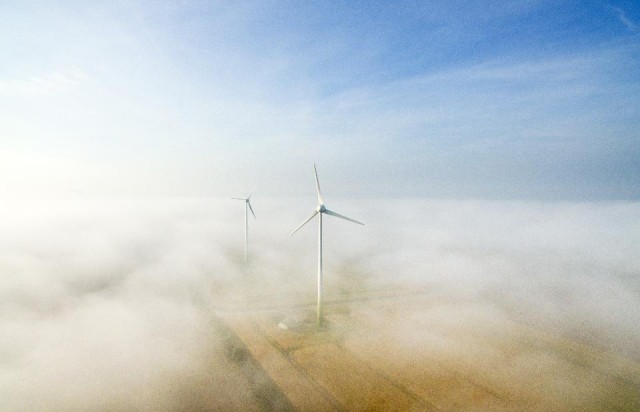NEWS Despite Its Oil-Industry Past, Energy Transitions Commission Foresees A Full-Renewables Future
by Jeff McMahon, based in Chicago. Follow Jeff McMahon on Facebook, Google Plus, Twitter, or email him here.
Renewables could provide nearly all the power in some regions in less than 20 years, reliably, and at a cost competitive with fossil fuels, according to a report released today by the Energy Transitions Commission.
The report’s striking confidence in solar and wind is likely to surprise not only critics of those technologies but also environmentalists, who greeted the commission with skepticismwhen it was founded in 2015. The commission was launched by Royal Dutch Shell and includes executives from Shell, GE Oil and Gas, Australia’s BHP Billiton, Norway’s Statoil and other traditional-energy companies.
“We believe that close to zero-carbon power systems with very high levels of intermittent renewable penetration (up to 98% in countries like Germany) could deliver reliable power in many countries at a maximum of $70 per MWh by 2035,” the commission states in its flagship report.
In 2015, Carbon Tracker’s Anthony Hobley criticized the ETCbecause of its initial goal to study how to fuel half the power sector with zero-carbon energy sources by 2050, a path that Hobley said would put the world on course for 4˚C of warming. The ETC appears to have raised its ambitions since.
Worldwide, zero-carbon sources could represent 80 percent of the global power mix by 2040, the commission now says, with solar and wind comprising the majority of that. That still leaves 20 percent of the world power market to fossil fuels. But that’s a big drop from the current state of affairs, in which fossil fuels provide about 80 percent of primary energy production.
“We are ambitious but realistic,” said commission chairman Adair Turner, a British businessman, via email. “Despite the scale of the challenges facing us, we firmly believe the required transition is technically and economically achievable if immediate action is taken.”
When I contacted Carbon Tracker Monday, Hobley had not had an opportunity yet to review the report or comment.
The report calls for reducing CO2 emissions more rapidly than the Paris Agreement. Its reliance on solar and wind depends in part on its projection that the cost of batteries will continue to drop. But it stresses there are cheaper means than battery storage to smooth out the intermittent performance of solar and wind. It cites a suite of technologies and techniques, including:
-
demand management, especially of industry
-
flexible electric vehicle charging
-
load shifting between regions
-
automated load shifting
-
better grid management
-
large-scale heat storage
-
distributed thermal storage in the built environment
-
compressed air storage
-
hydrogen storage
-
geologic storage
The commission modeled the use of these technologies in California and concluded that if California builds a power system that relies nearly entirely on solar and wind, these lower-cost options could offer the system reliability for almost half the cost of the traditional method of achieving reliability—turning on gas-turbine plants.
University of Berkeley energy professor Daniel Kammen has been outlining a similar scenario:
“The dramatic ramp up in solar resulted in the dramatic realization that a diverse, decentralized system can provide the same critical features that we think about with a baseload highly centralized system,” Kammen said last summer. “Not tomorrow, but in the time frame that we need it, it’s absolutely there.”
It’s easier to see how zero-carbon sources can conquer 80 percent of the energy market, the commission concedes, than the last 20 percent. If the world is to keep the global average temperature from rising more than 2º C, the report says, four energy transitions have to be pursued simultaneously in each country:
- Decarbonization of the power sector combined with electrification of transportation, buildings and industry.
- Decarbonization of activities that cannot be affordably electrified, by using biofuels or hydrogen for heating or by capturing carbon emissions.
- Improvements in energy productivity and efficiency.
- Optimization of fossil fuels within the constraints of the world’s overall carbon budget, including the continued replacement of coal with natural gas, an end to methane leaks and methane flaring at oil fields, and development of carbon capture and storage.
To achieve these transitions, the world needs to change the way it finances energy, and it needs “coherent and predictable” policy from governments, the report says, recommending a price on carbon.
By Jeff McMahon, based in Chicago. Follow Jeff McMahon on Facebook, Google Plus, Twitter, or email him here.

You must be logged in to post a comment.